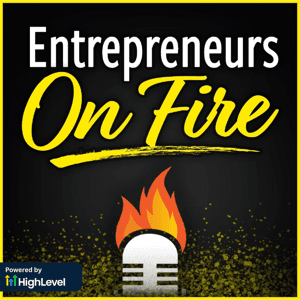Brands are personal. AI is not. So how do you use a tool that has no feelings, no experiences, and no voice of its own to help you build a brand that feels deeply personal and unmistakably you?
It starts long before you ever open ChatGPT.
Define Your Brand Before AI Touches It
Before you hand anything over to AI, take time to define your brand yourself. Ask:
What do they think about me now?
What do I want them to say about me?
That clarity becomes your North Star. Otherwise, you’re just asking AI to aimlessly generate words without direction.
Audit What the Internet Thinks
Once you know who you think you are, find out what the internet thinks you are. Instead of Googling your name or company like we used to, go to ChatGPT and ask:
“What is the brand perception of [Your Name or Company]?”
“What is [Brand] known for?”
“What do people say about this brand online?”
Then compare what comes back with your original vision. That’s where the human part of branding kicks in. You have to decide:
Do I adjust my message to match this audience, or do I refine my audience to match my message? That’s not a whim—it’s a business decision.
Know Who’s Actually Buying
Forget what you want to be true. Who’s actually opening their wallets? Sometimes your real buyers don’t match your target persona or AI’s assumptions. Analyze the overlap and decide:
Who do I really want more of?
Who do I actually have now?
You can’t market to everyone. Pick your lane.
Define Your Voice
Next, upload three pieces of your own writing—blog posts, service pages, whatever—to ChatGPT and ask:
“If you were another AI tool writing for this brand, how would you describe this tone and voice?”
That gives you a practical, data-driven description of your style—something you can reuse for consistency across content.
Once you’ve defined both your customer persona and brand voice, everything you produce should be filtered through those two lenses.
Clarify Your Unique Value
Now get specific about what makes you different. Ask:
What pain does my customer feel?
Why do they come to me instead of someone else?
You can even ask ChatGPT to analyze common pain points for your audience—but always check it against what your actual customers tell you.
That becomes the foundation for your positioning statement—your internal compass for marketing, not a fluffy public mission statement.
Analyze Competitors
Then, ask AI for a competitive analysis within your market or niche—set clear parameters like geography or audience size.
Use that list to identify where you stand, what gaps you can fill, and how to differentiate.
Test, Measure, Adjust
Finally, make changes slowly. Update your copy, tweak your visuals, and every few months, check:
Am I attracting the right audience?
Are leads getting better quality?
That’s how you use AI without losing yourself in the process.
REMEMBER:
You can’t outsource identity—AI refines it, not defines it.
Use AI as a mirror, not a mask.
Always verify what AI says about your brand with real human data.
Voice + audience clarity = consistent brand growth.
Branding is evolution, not automation.

























